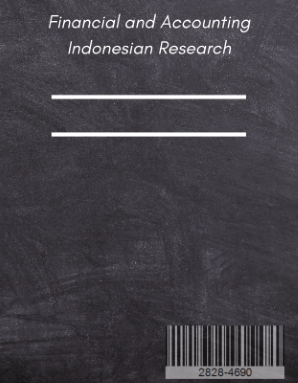Local Government Financial Performance Reviewed from Financial Ratios and Indexes
Abstract
This research aims to analyze the financial performance of the Ambon City regional government in terms of financial ratios in implementing regional autonomy. This research is a descriptive qualitative research type. Using documentation study data collection techniques or by tracing which is done by collecting secondary data, namely regional government financial report data for 2012 - 2015 from related agencies. The data analysis technique used is the descriptive analysis technique to assess financial performance, namely the regional independence ratio, effectiveness ratio, regional financial activity/harmony ratio and regional financial growth ratio, assessing financial capability using the degree of fiscal autonomy ratio and routine capability index. The research results found that the Regional Financial Independence Ratio (RKKD) of Ambon City during the three year observation period from 2013 to 2015 was on a scale of 0% - 25%, which means it was classified as "poor". Regional Financial Activity/Harmony Ratio (RAKD) for Direct Expenditures (BL) and Indirect Expenditures (BTL) in Ambon City, where during the observation period Indirect Expenditures (BTL) had a large portion compared to Direct Expenditures. The amount of indirect expenditure has reached more than 65%, which means that the Ambon City Government spends more on personnel expenditure than on public services. Growth ratio, it is known that of the four elements of the APBD, namely PAD, TPD, Indirect Expenditure and Direct Expenditure, the Ambon City government was only able to maintain good PAD growth during the observation period from 2013 to 2015, the rest of the growth rate still needs to be improved. The DOF ratio of Ambon City during the three year observation period from 2013 to 2015 was "very poor", below 10%, and that means that the Ambon City Government has very poor ability to finance government activities. The Routine Capacity Index (IKR) for the three year observation period from 2013 to 2015 shows that the ability of the Ambon City government to spend routine expenditures with local original income is still "deficient", namely less than 20% or in other words more than 80% of the City's routine expenditures. Ambon is covered by funds from the center.
Downloads
Copyright (c) 2024 Nella Rahanratat

This work is licensed under a Creative Commons Attribution-NonCommercial-ShareAlike 4.0 International License.




.jpg)

3.png)


